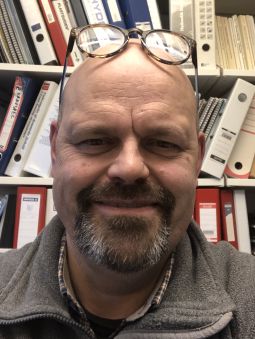
|
|
|
Keynote Speakers
Simon Goodchild
Transformed and Improved Learning Experiences of Mathematics in Engineering Programmes: Concern about students’ performance in mathematics, particularly those enrolled on engineering programmes, has been around for decades. In this lecture I want to address this concern directly by considering how performance might be improved if knowledge gained from mathematics education research were applied to transforming teaching and learning. I will call on experience from MatRIC, Centre for Research Innovation and Coordination of Mathematics Teaching, a national centre for excellence in higher education based at the University of Agder. It is sometimes argued that mathematics education researchers are so engaged in disputing theoretical frameworks that they are no use to the real mathematics educators – mathematicians and mathematics teachers. I hope to contradict this notion and focus on practical suggestions for action that might be achievable in the regular teaching and learning experiences of students on engineering programmes. I truly believe that we can make a difference to students’ learning experiences and outcomes, but this is dependent upon the sustained, coordinated and informed effort by teachers, students programme managers and institutional leaders.
Biography Simon Goodchild gained a bachelor’s degree in pure mathematics and education from the University of Wales (Bangor) followed by a one-year post-graduate teaching qualification in 1972. Through spare time study, he has subsequently gained a Master of Science degree in mathematics, statistics and computing education from the University of London, and PhD from the University of Exeter. His experience includes teaching in schools (grades 7 to 13), secondary mathematics teacher education, and university teaching and research. He has held positions in Africa, the UK and now in Norway. His professional work has included several international consultancies and evaluations of educational provision in Africa, Asia and Scandinavia. His present position is Director of MatRIC, Centre for Research, Innovation and Coordination of Mathematics Teaching, which is a Norwegian Centre for Excellence in (Higher) Education that was established in 2014 under his leadership at the University of Agder. His research since joining the University of Agder in 2004 has focused on mathematics teaching development, and since the founding of MatRIC this has been especially directed at teaching and learning mathematics in higher education. Simon Goodchild is author/co-author of numerous research papers and book chapters. He is co-editor of several research anthologies and author of the research monograph “Students’ Goals” which reports from his study of a grade ten mathematics class. https://www.uia.no/kk/profil/simong
Michael Rygaard Hansen Mathematical modeling is crucial in mechanical engineering. Modeling can be used for different purposes that all, in some way, has the objective of predicting the performance of machinery under various operating conditions. Mathematical modeling has several significant advantages: • Simulation of a wide range of operating conditions Especially, the use of mathematical modeling for the purpose of designing mechanical systems rather than simply evaluating a given system has attracted a lot of interest both within industry and research. This particular use of mathematical modeling is often referred to inverse design, and it can potentially assist or even automatically carry out the complex task of designing systems, thereby significantly increasing the competitive advantage of any company involved in mechanical engineering. For students, this method is extra attractive since the ability to do inverse design can replace the experience that otherwise is needed in order to design mechanical systems. There are, however, many challenges when introducing the inverse design in teaching. They include: • Setting up realistic problems that can be handled within a limited time and budget frame In this presentation, several examples of best practices in inverse design projects used in different teaching scenarios are presented. They range from relatively simple and clearly demarcated design projects to full-semester projects involving prototyping, workshop, and sub-suppliers, as well as design optimization.
Biography His main interests lie within the use of numerical methods for mathematical modeling, design, and optimization of dynamic mechatronic systems. Ha has teaching and supervision experience at B.Sc., M.Sc., and Ph.D. level since 1990. The courses have mainly been devoted to education within mechanical engineering. Course subjects have included: • 2D and 3D statics and dynamics of rigid body systems, Newtonian and Lagrangian approach The use of project and problem based learning to introduce mathematical modeling in engineering has always been the underlying theme and formed the basis for most teaching efforts and developments. https://www.uia.no/kk/profil/michaerh
|



